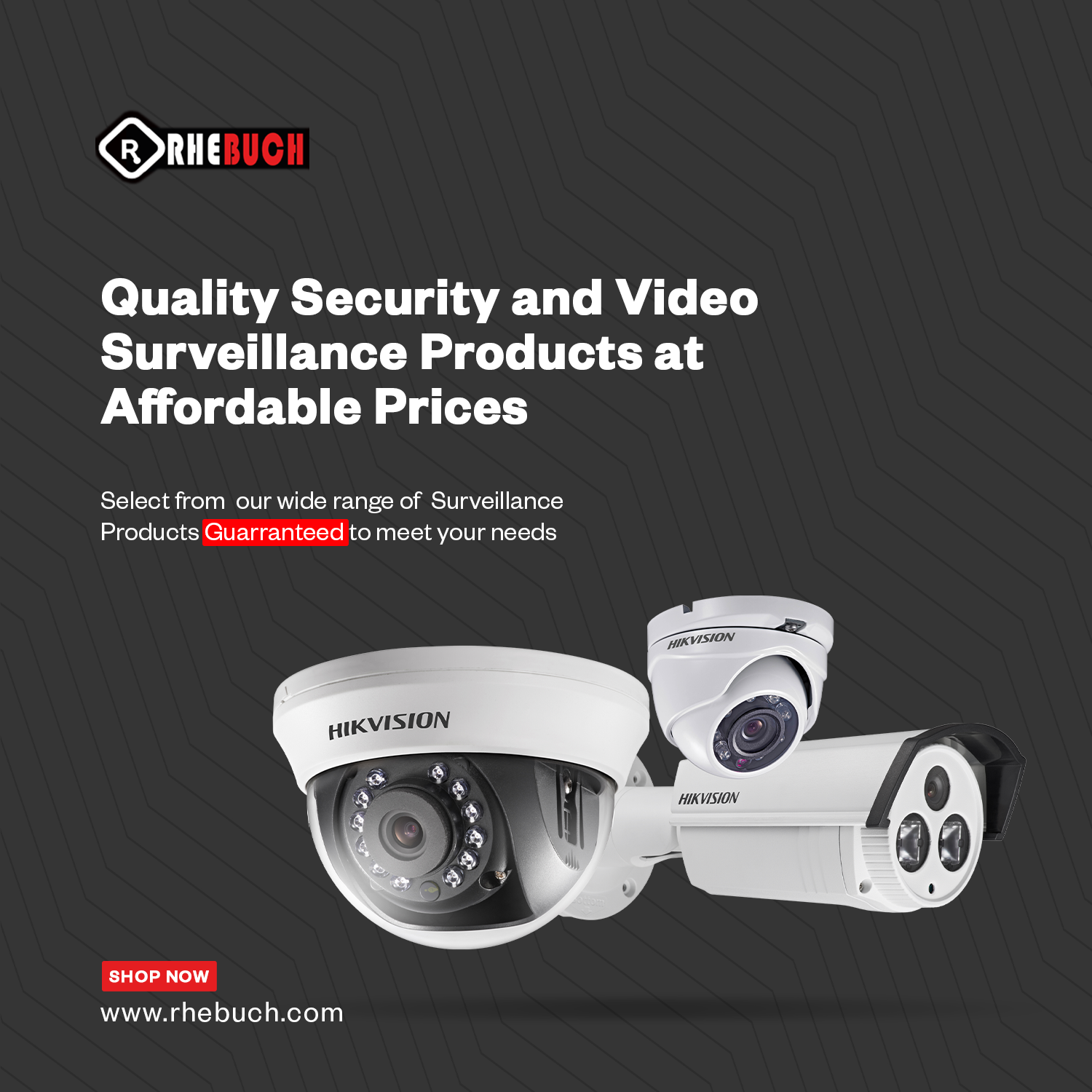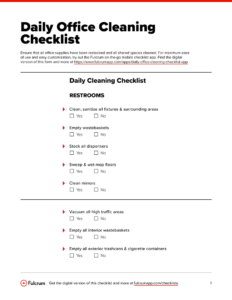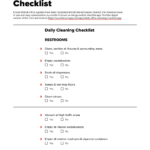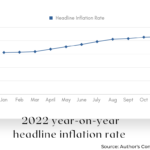BUSINESS
5 Weekly Tasks You Should Include on Your Office Cleaning Checklist
5 Weekly Tasks You Should Include on Your Office Cleaning Checklist
Weekly Tasks You Should Include on Your Office Cleaning Checklist. If you have a business enterprise or you run a workspace, then office cleaning should be one of your primary concerns. How clean your office is, directly affects the reputation of your business. It could also result in various health risks for your employees, and reduced productivity. Hence, it’s important to carry out proper cleaning of your office.
To properly clean your office environment, you need a good office cleaning checklist. You can use a daily, weekly, or monthly cleaning checklist to effectively clean your office.
In this article, you will find the 5 weekly tasks that can give your office a clean and tidy look. These 5 tasks should be included in your office cleaning checklist.
5 Weekly Tasks You Should Include on Your Office Cleaning Checklist
The most efficient way to clean an office is by completing the tasks in an office cleaning checklist. You can form a cleaning team with your staff members and create a cleaning checklist to guide the work, or you can contact a good cleaning service provider to handle your cleaning needs. However, regardless of who carries out the cleaning, these 5 tasks should be included in the weekly scheduled tasks.
1. Mopping
All hard floor surfaces in the office should be mopped/polished weekly. Although mopping is the least enjoyable weekly cleaning task, it is still a necessary task in any non-carpeted office space. You don’t want gunk and grime to accumulate, particularly in the kitchen or bathrooms. To lighten the load, assign this task to someone new each week.
2. Cleaning of exterior glass surfaces
Another important weekly task is cleaning windows, especially the external surface. Since this task requires great effort to complete, it is carried out weekly. It is very important to have clean windows especially if your office is mostly covered with glass. Since the exterior surface of the glass is what customers would see first when coming into your office, it will play a great role in the first impression the potential client or customer would have about the company.
3. Clean the Restroom and Kitchen Areas
The sinks and tiles in the restroom and kitchen should be thoroughly scrubbed and cleaned. The cleaners should use appropriate disinfectant when cleaning the restroom and kitchen. After cleaning the kitchen and restroom supplies should be replenished and organized.
4. Vacuuming
Vacuuming your office space should be carried out weekly. You don’t have to worry about purchasing a vacuum machine if you don’t have one. Simply hire a professional cleaning service, and they will clean your office space thoroughly with their equipment with includes a vacuum cleaner. Vacuuming your office is necessary to remove the dirt and spill that has hidden in v
various spaces around the workplace throughout the week.
5. Clean and Disinfect the telephones and other shared appliances
All Phones, coffee makers, blenders, elevator buttons, and other items used by the entire office should be thoroughly cleaned and disinfected once a week. Make use of the appropriate cleaning materials and disinfectant to clean various surfaces. This will help prevent the virus from affecting your employees and customers.
What is the Daily Office Cleaning Tasks?
Whether you are carrying out the cleaning yourself, or you hired a cleaning service to handle the cleaning for you, having a detailed checklist for daily, weekly, and monthly office cleaning will help you keep your workplace clean and sanitary. Here’s a checklist for daily office cleaning:
Daily Tasks
The daily office cleaning tasks involve a checklist that covers cleaning tasks for your reception, restrooms, bathrooms, and pantry areas. It involves basic cleaning, mopping, dusting, and wiping to maintain a clean office.
The following are office cleaning tasks to be completed daily:
- Empty the garbage bins and replace old garbage bags
- Vacuum all covers and tangles.
- Sweep or vacuum the hard floor surfaces in the office.
- Dust all the furniture and equipment in the office, including the work areas, seats, tables, and computers.
- Disinfect all contact surfaces with a soaked cloth.
- Mop the floors with disinfectant cleaners.
- Clean the glass windows and the entrance doors
- Refill the paper towels, toilet paper, and hand soap daily
- Disinfect the toilets and urinals.
- Clean the mirrors, windows, and glass.
- Disinfect all bathroom surfaces, including entry handles, and towel or hand dryer accessories.
- Mop tiles and flooring.
- Replace garbage bags and empty garbage cans.
- Clean the counters, sinks, tables, and chairs.
- Clean the microwave, coffee machines, and other kitchen appliances.
- Refill kitchen towels, dish soap, and hand soap.
- Clean the kitchen floors.
Read also: https://financialquest.com.ng/office-cleaning-checklist-what-your-cleaners-should-do-2/
Weekly Tasks
Below is a list of tasks that you should clean weekly in the office:
- All hard floor surfaces are to be polished.
- Clean the glasses’ exterior surfaces.
- Deep clean and sanitize refrigerators, microwaves, and other kitchen appliances.
- Consoles and phones should be disinfected.
- Clean the mats and carpets.
- Scrub the sinks and tiles in the restrooms and kitchen.
Monthly Tasks
Below is a list of office cleaning tasks that should be done every 4-6 weeks (monthly).
- Vacuum the vents and other office furniture material.
- Clean all the window covers in the office
- Dust and disinfect all hard-to-reach areas or covered places (i.e., along the highest points of windows, cabinets, ceiling fans, etc.).
- All wooden furniture or hardwood surfaces in the office should be polished.
- Organize and declutter office drawers and closets and get rid of old papers and files.
Conclusion
Cleaning your office is an essential task that must be completed daily, weekly, and monthly to ensure a healthy and productive working environment. If you don’t have enough staff members and equipment to execute the cleaning tasks, then I recommend you hire a commercial cleaning service to handle the cleaning service for your office space. That way, you can rest assured that your office will be properly cleaned by professionals.
FAQs
Does Commercial leaning Services have insurance?
Yes. Professional Cleaning services like Phronesis Cleaning are fully insured.
Do commercial cleaning service work during weekends and holidays?
Yes. A good commercial cleaning service will be available during normal working hours, evenings, weekends and even on public holidays. This is to ensure that your cleaning needs are met whenever and wherever you want.
More from my site
BUSINESS
Rhebuch: Best Place To Buy Quality And Affordable Security Surveillance Cameras In Nigeria

Rhebuch: Best Place To Buy Quality And Affordable Security Surveillance Cameras In Nigeria
The world is already going digital with the spate of innovations that are constantly released to drive convenience and comfort. It often comes with the sense that technology is the present scope shaping the future. There are many tech products in homes, offices, and other places today, with respective designs to serve relative purposes for human causes. This is because of how effective and efficient they are in making life easy for us as a people.

Meanwhile, it is common knowledge that security is a serious business – concerning the safety of lives and property. As such, adopting technology takes cognizance of this through developing tools or gadgets capable of improving security across space and time. One such piece of equipment is the security surveillance cameras- designed to give real-time information about happenings around the vicinity of the installation. Although these have been around for quite some time, their relevance to enhancing security and safety has not waned, especially as they continue to improve.
Nigerians are not new to using security surveillance cameras, as you can find them at homes, offices, shopping centers, religious centers, banks, estates, streets, etc. But while some people believe the cost of acquiring these gadgets is expensive, others are skeptical of their effectiveness – both untrue. Rhebuch is changing this age-long narrative by providing quality and affordable security surveillance cameras to Nigerians.
What Is Rhebuch?
Rhebuch is a technological company that is a multi-brand distributor of smart homes, video surveillance, fire alarms, access control, smart lighting systems, and many more. Therefore, it is your one-stop shop to buy all automation systems for your home or office. This company is reputed for providing the latest global standard equipment to foster the safety and security of lives and property in Nigeria.
There are CCTV cameras of different brands on Rhebuch – some of which include DAHUA 4HDD EPoE, DAHUA 24-port Unmanaged PoE switch, DAHUA 8MP IR fixed-focal dome network camera, Hikvision fixed dome network camera, DAHUA unmanaged desktop switch, etc.
Therefore, Rhebuch is the leading place to buy your security surveillance cameras, as there are many benefits from shopping on this platform.
Benefits Of Shopping For Security Surveillance Cameras On Rhebuch
1. Affordable And Quality Cameras
Rhebuch operates in sync with its mission of providing its customers with the best and latest gadgets in the marketplace – which it still upholds. As such, this platform is where affordability and quality melt, such that you purchase original security surveillance cameras at the best prices that are relatively lower than its competitors.
For instance, you can buy a DAHUA fixed focal dome network camera for as low as N75,000, cheaper than other marketplaces selling the camera. Therefore, you are saving more when you buy on Rhebuch.
2. Multiple Camera Options
Rhebuch provides a wide range of options when buying your security surveillance cameras. This is because they vary in type, purpose, and price, making the platform a store for every budget. This aims to change the misconception that these cameras are expensive or ineffective. You can find your preferred security camera with a particular focal dimension and coverage on Rhebuch without buying whatever is available.
3. Fast And Free Delivery
You are eligible for fast and free delivery when you purchase security surveillance cameras and other systems on Rhebuch. This is to make the logistics of your purchased products seamless through its unique way of proving that the company is highly customer-centric. Therefore, your cameras will be delivered to the platform within 24 hours of purchase.
4. Fast Returns
Rhebuch allows its customers to return their purchased products if they are no longer interested or unsatisfied. Irrespective of the reason, if it is valid, there is a window for you to return your camera for another. You can complete the return process on the platform within 24 hours.
5. Discount Offers
You can get the best deals for purchasing security surveillance cameras on Rhebuch. This is always available during special sales seasons, where you will have price slashes for your sales. It can go as high as a 30% discount on the platform. That is why it is important to always keep up with the sales and deals on the platform so as not to miss out.
Conclusion
You can get quality security cameras in your home or office at the best prices on Rhebuch, as it boasts a large customer base that trusts the platform for security and safety automation needs. So you can buy all your security gadgets on Rhebuch to give you the sense of safety you desire.
More from my site
BANKING
Financial Analysis: A Comprehensive Study of The Well-Being of A Country

Financial Analysis: A Comprehensive Study of The Well-Being of A Country
Understanding the financial stability of a country requires a thorough understanding of financial analysis. In order to offer insights into the overall financial stability and overall wellness of the country, it entails evaluating a range of economic indicators, financial performance, and market movements.
In this article, we will delve into the fundamentals and importance of financial analysis in evaluating a country’s economic situation.
THE HISTORY ABOUT FINANCIAL ANALYSIS
Ancient Beginnings:
The roots of financial analysis can be traced back thousands of years. The ancient Mesopotamians, Egyptians, and Greeks were among the pioneers of documenting financial transactions, creating basic records of assets and liabilities. These early attempts laid the groundwork for the concept of financial analysis through the study of financial statements and ledgers.
Medieval Europe:
During the Middle Ages, Europe witnessed the rise of merchant guilds and the emergence of double-entry bookkeeping. Italian mathematician and Franciscan friar, Luca Pacioli, is often credited with formalizing double-entry bookkeeping, publishing his seminal work “Summa de arithmetica, geometria, proportioni et proportionalita” in 1494. The concept of balancing debits and credits within financial records formed the basis for modern financial analysis techniques.
Industrial Revolution:
The Industrial Revolution in the 18th and 19th centuries revolutionized business and the need for financial analysis grew rapidly. As companies expanded and diversified, investors began demanding more comprehensive financial reports to assess the potential risks and returns of their investments. The birth of limited liability companies further accelerated the need for financial analysis, as shareholders sought transparency in the performance of their investments.
Modern Era:
The 20th century witnessed significant advancements in financial analysis techniques. The advent of electronic computing in the mid-1900s enabled the processing and analysis of vast amounts of financial data, leading to the development of sophisticated financial models and ratios.
The Great Depression of the 1930s laid the groundwork for modern financial analysis as regulators sought effective ways to prevent future economic crises. The establishment of the U.S. Securities and Exchange Commission (SEC) in 1934 brought about standardized reporting requirements, including the filing of audited financial statements. This increased transparency and standardized financial reporting provided analysts with a more accurate and consistent basis for their analysis.
The Rise of Quantitative Analysis:
In the latter half of the 20th century, the growth of computing power and the availability of large data sets propelled financial analysis into new territory. Quantitative analysis, utilizing statistical models and mathematical algorithms, started gaining prominence. Financial analysts began incorporating complex mathematical methods to assess investment opportunities, risk management, and portfolio optimization.
Modern Financial Tools:
With the advent of the internet and the digital age, financial analysis has become even more accessible and data-driven. Sophisticated software programs, data analytics tools, and artificial intelligence have revolutionized the way financial data is analyzed and interpreted. In recent years, technologies like machine learning have been leveraged to develop predictive models that can assess future trends and make accurate financial forecasts.
MEANING
Financial analysis is the process of evaluating businesses, projects, budgets, and other finance-related transactions to determine their performance and suitability. Typically, financial analysis is used to analyze whether an entity is stable, solvent, liquid, or profitable enough to warrant a monetary investment.
Financial analysis is a fundamental tool that allows organizations and individuals to assess the past, present, and future financial health of a business or investment. Through a systematic examination and interpretation of financial statements, ratios, and other key indicators, financial analysis helps in making informed decisions, optimizing resources, and improving overall financial performance. In this article, we will delve into the meaning of financial analysis, its prominent components, and its significance across various sectors.
Financial analysis involves scrutinizing financial data to evaluate the performance and profitability of an entity. It assists in quantifying the effectiveness of financial decisions, identifying trends, predicting future outcomes, and benchmarking against industry standards. By analyzing financial statements, investors, analysts, and other stakeholders gain valuable insights into the financial position, liquidity, solvency, and operational efficiency of an organization.
FUNDAMENTALS OF FINANCIAL ANALYSIS IN A COUNTRY
- Gross Domestic Product (GDP): GDP is a primary indicator used to gauge the economic performance of a nation. Financial analysts analyze GDP growth rates and its components, such as consumer spending, government expenditure, investments, and net exports. This analysis helps in determining the overall strength of the economy and identifying areas of potential growth.
- Trade and Balance of Payments: Trade analysis focuses on a country’s imports, exports, and balance of payments. Evaluating trade patterns helps identify sectors driving the country’s economic growth, trade imbalances, and potential risks to the economy from external factors such as changes in global demand or disruptions in supply chains.
- Inflation and Interest Rates: Analyzing inflation rates and interest rates provides insights into the stability of a country’s economy. High inflation erodes purchasing power, while high-interest rates can impact borrowing costs, affect consumer spending, and investment behavior. Financial analysts assess the impact of inflation and interest rates on an economy’s overall competitiveness and economic growth potential.
- Government Debt and Fiscal Policy: Analyzing a country’s government debt levels and fiscal policy is crucial in understanding its financial sustainability. A high level of government debt may lead to increased borrowing costs, reduced investor confidence, and potential risks to economic stability. Evaluating fiscal policies helps determine whether a country is managing its finances effectively and implementing sustainable economic growth strategies.
- Stock Market Performance: The stock market reflects investor sentiment and provides valuable insights into a country’s economic outlook. Analysts evaluate key stock market indices, such as the country’s primary exchange, sector-specific indices, and market capitalization trends. Monitoring stock market performance allows for an understanding of investor confidence, economic growth expectations, and potential risks to the financial system.
- Banking Sector and Financial Institutions: A robust banking sector is essential for economic stability. Financial analysts assess the health of the banking system by evaluating indicators such as non-performing loans, capital adequacy ratios, and the overall stability and soundness of financial institutions. Understanding the well-being of financial institutions helps gauge the potential risks to the overall economy, including credit availability, liquidity, and financial contagion.
- Regulatory Environment and Governance: The regulatory environment and governance play a critical role in attracting investment and fostering economic growth. Financial analysts assess the effectiveness of regulatory frameworks, transparency in financial transactions, and the overall credibility and efficiency of institutions responsible for enforcing regulations. Evaluating the regulatory environment aids in understanding potential risks and opportunities for sustainable economic development.
SIGNIFICANCE OF FINANCIAL ANALYSIS IN A COUNTRY
Financial analysis plays a vital role across various sectors, serving the following purposes:
- Evaluating Financial Performance: By conducting a comprehensive financial analysis, companies can assess their performance, profitability, and financial stability. This, in turn, helps in identifying areas for improvement, developing strategic plans, and making sound financial decisions.
- Assessing Investment Viability: Investors rely on financial analysis to evaluate the profitability and risks associated with potential investments. Through detailed scrutiny of financial data, investors can determine the financial health and growth prospects of a company, aiding in making informed investment decisions.
- Facilitating Lending Decisions: Financial institutions utilize financial analysis to assess the creditworthiness of loan applicants. By analyzing financial statements, evaluating ratios, and assessing the risk profile, lenders can ascertain the borrower’s ability to repay loans and make sound lending decisions.
- Supporting Strategic Decision-Making: Financial analysis aids in strategic decision-making, such as expansion, diversification, or mergers and acquisitions. Understanding a company’s financial position and performance provides a foundation for evaluating the feasibility and potential outcomes of such decisions.
CONCLUSION
Conducting a comprehensive financial analysis provides valuable insights into the economic landscape of a country. By evaluating indicators such as GDP, trade patterns, inflation rates, government debt, stock market performance, banking sector health, and regulatory environment, financial analysts can gauge the overall financial health, identify potential risks, and recommend strategies for sustainable economic growth. Accurate and timely financial analysis acts as a compass, guiding policymakers, investors, and businesses to make informed decisions and contribute to the overall prosperity of the nation.
More from my site
BUSINESS
Packaging: An Important Factor In The Success of Business Product

Packaging: An Important Factor In The Success of Business Product
Packaging is essential in the current competitive business climate for drawing in customers, communicating brand identity, and safeguarding goods while they are being transported and stored. Packaging is no longer just an afterthought; rather, it is now recognized as a crucial factor in shaping consumer choices and creating a lasting brand impression. This article will explore why packaging is an essential part of the business product lifecycle, highlighting its impact on sales, marketing, and customer satisfaction.
MEANING
Packaging is the science, art, and technology of enclosing or safeguarding goods for use, sale, distribution, and storage. Packaging also includes the process of creating, assessing, and designing packages. A coordinated system of getting things ready for shipping, warehousing, logistics, selling, and final usage is known as packaging. Packaging serves to transport, preserve, inform, and sell goods. It is totally integrated for use in business, government, institutions, industry, and private use in many nations.
PACKAGING
In the commercial sector, packaging is essential since it protects a product and gives it a visual identity. The packaging industry has grown and changed significantly over time.
- Early Beginnings: Packaging has been an essential part of trade and commerce for centuries. In ancient times, merchants used simple materials like leaves, animal skins, and hand-woven fabrics to wrap and protect goods during transportation. Clay and pottery containers emerged as one of the earliest forms of packaging for storing and selling various products.
- Industrial Revolution and its Impact: The Industrial Revolution in the 18th and 19th centuries brought significant advancements in packaging. As mass production and transportation became more prevalent, the need for standardized packaging grew. The introduction of tin cans for preserving food and glass bottles for beverages revolutionized packaging for business products, allowing for longer shelf life and easier distribution.
- Rise of Consumer Packaging: Packaging took a significant turn during the 20th century when the consumer culture began to thrive. Companies realized the potential of packaging as a marketing tool. This period saw the emergence of aesthetically appealing packaging designs, labels, and branding elements to grab the attention of consumers on store shelves.
- Materials Innovation: Technological advancements in the 20th and 21st centuries brought about a revolution in packaging materials. Cardboard, paperboard, and plastics became widely used due to their cost-effectiveness, versatility, and durability. These materials allowed for more creative and visually appealing packaging designs while ensuring product protection and ease of transportation.
- Sustainable Packaging: In recent years, there has been a growing emphasis on sustainability in packaging design. As environmental concerns gained attention, businesses began exploring eco-friendly alternatives. Biodegradable and recyclable materials, as well as minimalist designs that reduce waste, have gained popularity. Sustainable packaging not only helps reduce the environmental impact but also appeals to conscious consumers who prioritize ethical practices.
- Personalization and Innovation: With the advent of digital technology, packaging has continued to evolve, incorporating interactive elements and customization. Personalized packaging, such as customized labels, allows businesses to create connections with customers by making them feel special and valued. Augmented reality (AR) and QR codes have also found their way into packaging, providing additional information, interactive experiences, and promotional opportunities.
The history of packaging for business products has come a long way, transforming from a practical necessity to a powerful tool for branding and marketing. Advancements in technology, materials, and consumer preferences have shaped its evolution. From ancient leaves to modern sustainable solutions, packaging continues to adapt to changing times
IMPORTANCE
- Attracting Customers: Packaging serves as the face of a product, acting as the first point of contact for potential customers. An eye-catching and well-designed packaging can grab customers’ attention amidst numerous competitors on shelves or online marketplaces. It helps create a positive emotional connection and influences consumers’ purchasing decisions.
- Reflecting Brand Identity:Packaging is not just about aesthetics; it is an opportunity for businesses to express their brand identity and values. The design elements, colors, typography, and imagery incorporated in the packaging should align with the brand’s message and target audience. Consistency in packaging helps strengthen brand recall and builds brand loyalty among consumers.
- Differentiation: In a saturated market with similar products, packaging becomes a critical tool for differentiation. Unique packaging designs or innovative features set products apart from competitors, making them stand out and fostering consumer interest. By offering a memorable packaging experience, businesses can generate a sense of exclusivity and increase the perceived value of their products.
- Product Protection and Safety: Packaging serves as a protective shield for products during transportation, storage, and handling. The right packaging materials and techniques ensure product integrity, preventing any damage or spoilage. Additionally, packaging can include proper labeling and instructions for safe use, ensuring customer satisfaction and minimizing liability risks for businesses.
- Enhancing User Experience: Effective packaging is not limited to attracting customers; it also focuses on providing a seamless user experience. Intuitive and user-friendly packaging designs make it easier for consumers to access and use the product. Clear labeling and informative instructions can guide users through the product’s features, leading to a positive customer experience.
- Sustainable Packaging: With increasing environmental concerns, businesses are now striving to adopt sustainable packaging practices. Eco-friendly packaging materials, such as recycled or biodegradable materials, are gaining popularity among environmentally conscious consumers. Incorporating sustainable packaging not only reduces a business’s carbon footprint but also enhances brand reputation in a socially responsible and sustainable manner.
MAJOR CLASSIFICATION OF PACKAGING MATERIALS
As we have discussed so far, many kinds of packaging require different types of packaging materials. Here is a brief introduction of the most common types of packaging.
- Primary Packaging
- Secondary Packaging
- Tertiary Packaging
- Ancillary Packaging
- Primary Packaging: For businesses that produce perishable items, primary packaging is crucial. Industries or factories that produce medicines, food items, beverages, and other perishable items, need compact packaging to preserve or protect the item.
There are different types of packaging materials that are used in primary packaging, and here is more about them.
- Laminated Pouches: Laminated pouches are made of very thin plastic or polymer. They have a special adhesive on the opening end that reacts to heat and gets sealed. To use the laminated pouches, one needs special equipment for lamination.
- Plastic Containers: This type of packaging material is more common in businesses. Most of these plastic containers are reusable.
iii. Thermoformed Products: Made out of thermoplastics, this type of packaging is primarily used for electronic items. Thermoplastics are heated and molded into shapes particular to the products and their subsidiary equipment.
- Secondary Packaging: After the primary packaging, all products that are delivered in bulk need to be packed again, and this type of packaging is called secondary packaging. There are different types of packaging materials that are used in secondary packaging, and here is more about them.
- Plastic Crates: Plastic crates are used to pack and carry bulk orders of goods. This type of packaging is very common in stores and shopping centers.
- Plastic Trays: Plastic trays are similar to plastic crates; however, they have a lesser capacity. These are open flat containers made out of plastic and are mainly used in organizing stuff.
iii. Wooden Crates: Wooden crates are used primarily for storing and sorting purposes. These are extensively used in warehouses and supermarkets. Wooden crates are stackable, eco-friendly packaging supplies.
- Tertiary Packaging: Tertiary packaging is required for the transportation and shipping of products. Essentially, this type of packaging ensures an added safety layer protecting products from bumps and jerks.
There are a few types of packaging materials primarily used in tertiary packaging, and here is more about them.
i.Corrugated Fiber Board: Corrugated fiber boards have fluted fiber sheets that cushion the product against accidental bumps and jerks. These are extensively used for making boxes that are used for shipping purposes.
- Wooden Containers: Many varieties of wooden containers are available in the market. As a matter of fact, wooden boxes and crates also come under this type of packaging material.
iii. Wooden Pallet: Wooden pallets are used to stack goods upon them. Because of their shape, shifting large packages or stacks of goods using forklifts becomes easy.
- Plastic Pallet: Plastic pallets work exactly the same way wooden pallets do. This type of packaging material is made of plastic, and they are extremely durable.
- Ancillary Packaging: Last but not least, ancillary packaging is one of the most crucial types of packaging materials. These are essential consumables in the packaging industry. Mainly these are:
- Adhesives
- Printing Inks
- PP Straps
- Caps & Closures
- Tapes
- Labels
- Cushioning Material
CONCLUSION
Packaging is now a strategic asset that firms cannot afford to ignore, rather than just a functional requirement. Packaging not only shields goods but also acts as a silent salesman, drawing attention, expressing value, and fostering customer loyalty and brand identification. In a market that is becoming more and more competitive, businesses can differentiate themselves from rivals, improve consumer happiness, and promote long-term success with effective packaging design. Adopting sustainable methods and cutting-edge packaging will not only open doors for expansion but also demonstrate a company’s dedication to its clients, their experiences, and the environment
More from my site
-
EDUCATION2 years ago
Jamb Cut-Off Mark for A Law Degree in Nigerian Universities
-
BANKING2 years ago
POLARIS Bank Transfer Code| How to Activate the USSD Banking Code
-
BANKING2 years ago
Union Bank Transfer Code| How to Activate the USSD Banking Code
-
BANKING2 years ago
FIRST Bank Transfer Code| How to Activate the USSD Banking Code
-
BANKING2 years ago
How to Check UBA Account Balance From Anywhere
-
BANKING2 years ago
GT Bank Transfer Code| How to Activate the USSD Banking Code
-
BANKING2 years ago
Check GTB Account Balance via Internet and USSD Code
-
BANKING2 years ago
ZENITH Bank Transfer Code| How to Activate the USSD Banking Code






































